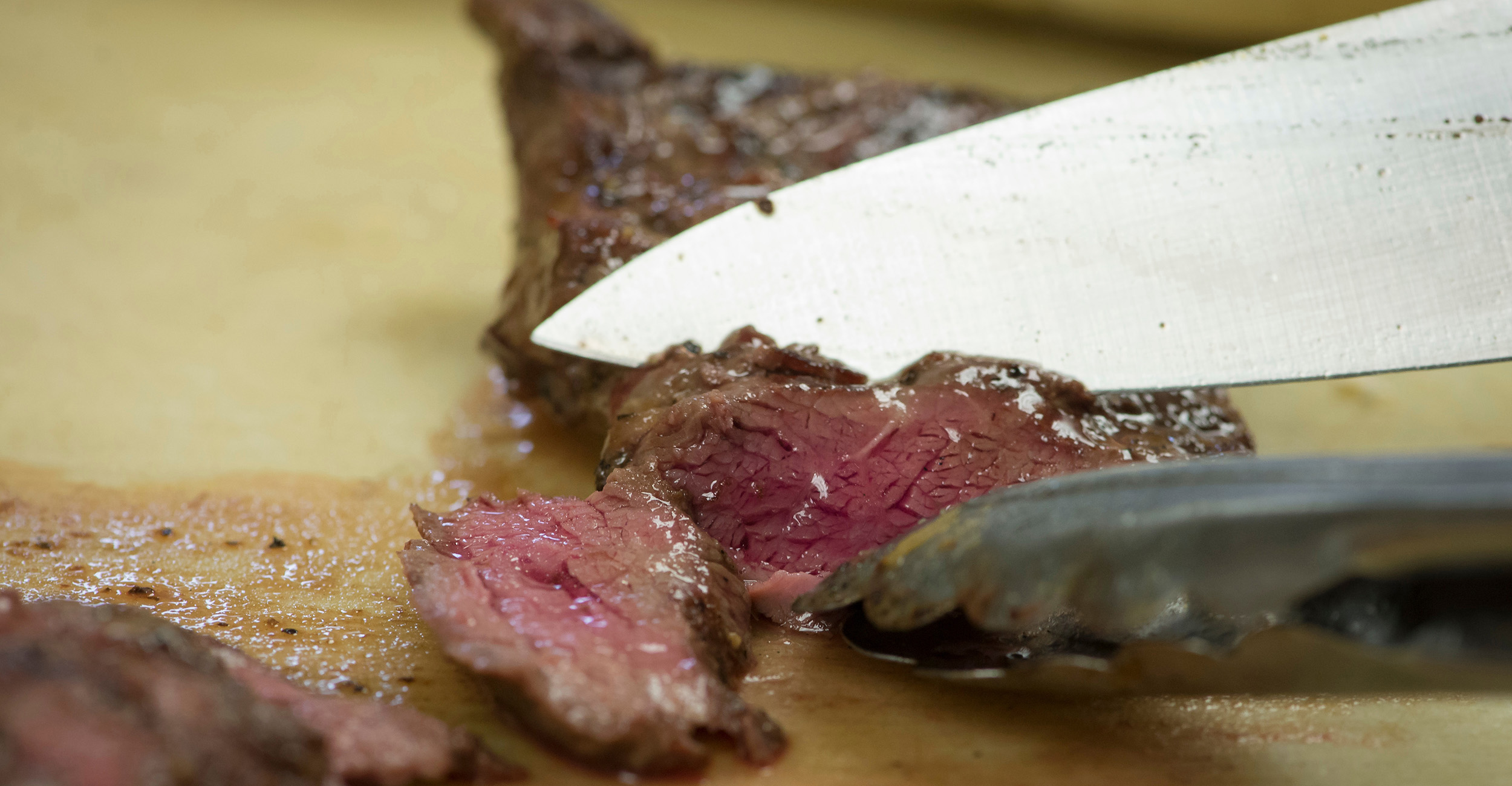
Know your quality grades to get the most out of steak season
Tuesday, May 4, 2021
Media Contact: Donald Stotts | Agricultural Communications Services | 405-744-4079 | donald.stotts@okstate.edu
Grocery meat counters are filled with beef steaks labeled Choice, and while many consumers rightfully associate the label as a good choice for grilling or the stovetop, they might not be familiar with industry quality standards behind the designation.
A beef steak’s tenderness, juiciness and flavor all affect its palatability, or the degree to which food and fluids are deemed desirable and satisfying to a person’s palate, said Earl Ward, Oklahoma State University Extension area livestock specialist for northeastern Oklahoma.
Those aspects are worth closer consideration by industry producers as well as consumers: More than 98% of American households purchased meat in 2020, and 43% of Americans now buy more meat than before the pandemic, according to the 2021 Power of Meat report conducted on behalf of the Food Industry Association.
The U.S. Department of Agriculture has set quality grades that evaluate factors that could affect the palatability of the steak.
“Beef carcass quality grades such as Choice are based off the degree of marbling — the amount of fat within the lean tissue of the muscle — and carcass maturity,” Ward said. “Marbling is the single greatest factor to a steak’s palatability and is determined by an animal’s diet and genetics.”
The USDA quality grades Prime, Choice and Select account for 90% to 95% of beef steaks in grocery meat counters. However, there are also beef quality grades of Standard, Commercial, Utility, Cutter and Canner. The latter five grades are for more mature carcasses, typically animals older than 42 months of age when harvested. Thus, any steak labeled Prime, Choice or Select likely comes from an animal less than 42 months old.
Key takeaways of the three most dominant beef quality grades commonly purchased by consumers include:
- Prime – the highest-quality grade available. It contains the most marbling and, if prepared correctly, what numerous studies have found to be the most flavorful eating experience compared with other beef steaks. Steaks of this grade are quickly bought by five-star restaurants and upscale wholesalers. About 5% of young American cattle are graded as USDA Prime.
- Choice – a high-quality steak that contains less marbling than Prime but is still very flavorful, tender and juicy when prepared properly. The amount of marbling can vary widely. Depending on the cut, a Choice steak may require slower cooking or a marinade to bring out its tenderness and flavor, compared to a Prime cut. The most commonly purchased type of steak at grocery stores, approximately 60% to 65% of young American cattle grade USDA Choice.
- Select – formerly called Good, it still represents a quality meal. The reduced amount of marbling will be noticeable by simple visual inspection, compared to Prime or Choice steaks. Select cuts most often are either marinated or braised to achieve the best eating experience. Select steaks also benefit from longer cooking times at lower temperatures. Approximately 25% of the young American cattle grade USDA Select.
Standard and Commercial grades of beef are typically sold as ungraded or as store brand meat. Utility, Cutter and Canner grades of beef are seldom sold as steaks at retail outlets but are instead used to make ground beef or processed products.
“If you want a great steak, start by picking up a high-quality cut of beef, fire up the grill, add some salt and pepper, and enjoy the flavors provided by its juiciness and marbling,” Ward said.
Additional information about beef quality grades and standards is available through the USDA’s Agricultural Marketing Service at https://www.ams.usda.gov/grades-standards/carcass-beef-grades-and-standards.
